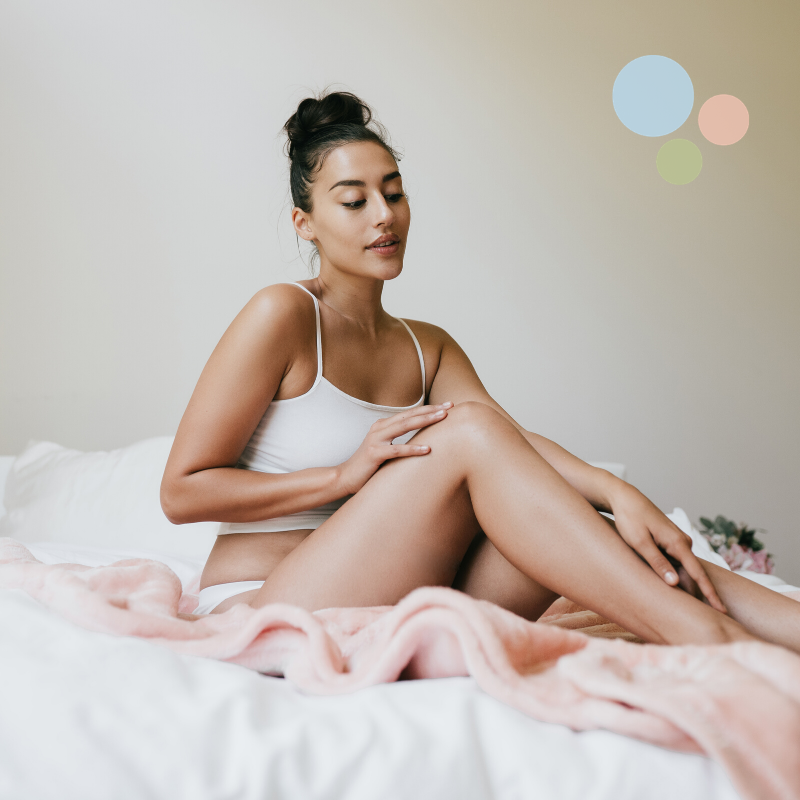Read Time: 3 minutes
Not all body sugaring is equal, so it’s important to choose a certified and experienced professional. Proper training ensures your practitioner is skilled in both technique and theory, making their services more efficient and effective. This training improves your outcomes, especially when differentiating between sugaring for hair removal and sugaring for skin conditioning, particularly for inflammatory skin conditions like eczema and psoriasis.
Inflammatory Skin Conditions: Eczema vs. Psoriasis
Inflammation in the skin is characterised by:
- Redness
- Irritation
- Sensitivity
- Swelling
- Heat
To understand and treat skin inflammation, your practitioner should have in-depth knowledge of skin anatomy, physiology, histology, and morphology.
Eczema
Eczema often appears in areas where the skin creases, such as inside the elbows, behind the knees, on eyelids, and hands. It’s common in young children, affecting 1 in 5 children under five years old. Eczema sufferers often also have asthma and allergies.
Stress can trigger eczema and comes in three forms:
- Mechanical – rubbing or friction
- Emotional – stressful situations from school or work
- Physical – intense physical activity or illness
Identifying your eczema triggers is crucial to minimising flares. Affected areas typically appear very dry, thickened, or scaly. In fair-skinned individuals, these areas may look reddish and then turn brown. In darker-skinned people, the affected area might appear lighter or darker.
Psoriasis
In psoriasis, immature skin cells build up on the skin’s surface, forming plaques or scaling. Healthy skin regenerates in 14-120 days, depending on age, but in psoriasis, this process takes about three days.
Psoriasis symptoms can include:
- Red patches with silvery scales
- Small scaling spots (common in children)
- Dry, cracked skin that may bleed
- Itching, burning, or soreness
- Thickened, pitted, or ridged nails
- Swollen and stiff joints

Psoriasis can range from mild to severe, with patches varying in size. Most types go through cycles of flaring and remission. Certified Advanced Sugaring Practitioners can treat psoriasis, provided the affected areas are not weeping, cracked, or bleeding.
Common Psoriasis Types
- Plaque Psoriasis: Causes dry, red skin lesions covered with silvery scales. Plaques can occur anywhere on the body.
- Scalp Psoriasis: Appears as red, itchy areas with silvery-white scales.
- Nail Psoriasis: Affects fingernails and toenails, causing pitting, abnormal growth, and discoloration. Sugaring is not recommended for this condition.
Differentiating Eczema and Psoriasis
Psoriasis lesions are typically thick, red, dry, and scaly, while eczema lesions can be moist and oozing.
When Not to Sugar
Avoid sugaring hair removal treatments on psoriasis or eczema when the affected area is weeping, moist, or oozing.
Prevention is Better Than Cure
Insisting on trained and licensed professionals ensures your provider is qualified, and that the business complies with infection control standards. A knowledgeable beauty therapist will keep detailed records of your treatments, and can advocate for you with your healthcare team if they have any concerns.
Infection Control
Professional practitioners follow standard precautions, assuming all blood and body substances are potential sources of infection. They use protective barriers, such as gloves for every treatment, and adhere to additional precautions during airborne pandemics.
Why Sugaring is Safe for Eczema and Psoriasis
Advanced sugaring is safe for eczema and psoriasis because it gently exfoliates without damaging the skin further.
Glossary
- Sugaring: A method of hair removal that uses a sugar paste. It’s more comfortable than waxing because the paste sticks to hair, not skin, and is applied at body temperature, preventing burns.
- Eczema: A genetically predisposed inflammatory skin condition that is itchy but not contagious.
- Psoriasis: A chronic autoimmune disease that causes red, scaly patches on the skin. It’s not contagious and commonly affects the elbows, knees, scalp, and genitals.


You must be logged in to post a comment.